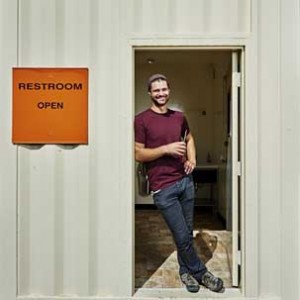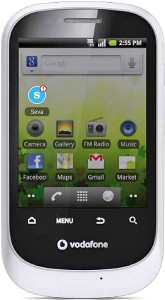Vodafone Americas Foundation funds connected toilet project which could help 2.5bn people access better sanitation
 I didn’t start out to become the creator of a texting toilet, but my team’s invention, with the Vodafone Americas Foundation’s help, will make a major contribution to solving one of the world’s biggest development challenges.
I didn’t start out to become the creator of a texting toilet, but my team’s invention, with the Vodafone Americas Foundation’s help, will make a major contribution to solving one of the world’s biggest development challenges.
About 2.5 billion people—around half the people in the developing world—do not use an improved sanitation facility according to the United Nations.
Improved sanitation is not the inside toilet you and I are used to, but covers facilities as basic as a pit latrine covered by a slab. This is a major problem with a wide-ranging impact on health, environment and livelihoods.
A few years ago I joined a project to tackle that problem by creating a low cost, solar-powered wastewater treatment and recycling system for developing countries. The system is an electrochemical reactor that converts human waste into disinfected water.
Our project received support as a result of winning the Bill and Melinda Gates Foundation’s 2012 Reinvent the Toilet Challenge. That enabled us to field test the technology in India.
However, the field tests identified a significant challenge that we hadn’t anticipated. How would we fix the toilets when they break? And who would fix them?
It became clear that there were not enough people with the skills needed to diagnose and repair problems with the unit in the areas needing them, even if we provided spare parts. In those early days, when one of our units developed even a minor issue (which happens about once every six months) it required one of our team to fly from California to fix it.
We thought about whether using mobile in some way could help solve the problem, since ironically more people have access to devices than proper toilets. However, we had no money to explore our ideas.
That was when we entered, and then won, the Vodafone Americas Foundation 2015 Wireless Innovation Project. That US$300,000 prize money has given us the funding over three years to develop a self-diagnosis system for the toilet and to test it.
Seva (which means service in Hindi) combines software and low cost sensors so that the toilet can tell when and how it is broken. When it identifies a problem it texts a local technician. A video display on the treatment system then provides the technician with step-by-step pictorial instructions, showing them how to replace the broken part.

Once repaired, the technician uploads the repair log, which is then backed up to the cloud. This ensures an archive of reliable and comparable data to measure against as the project progresses.
The toilet doesn’t just text a technician. It can also contact known users to suggest they use different facilities until it is repaired.
The self-diagnosing technology we created has dramatically reduced the long term cost of the system.
We have been successfully testing our waste water treatment system in communities within Gujarat, Kerala and Tamil Nadu in India, in three schools in China and will soon be putting it into some elementary schools in Durban in South Africa.
Just for good measure we’ve also set one up closer to home on the Caltech campus. This winter we are starting to test the mobile based self-diagnosing SEVA software at Caltech and by spring 2016 we hope to be using the international field sites to test the SEVA technology in the developing world.
NGOs and government agencies have long focused on the implementation of new sanitation technologies without a clear strategy on monitoring and maintaining those systems. Thanks to the Vodafone Americas Foundation, Seva may soon resolve that issue, helping billions of people to enjoy better sanitation.
 Cody Finke is the lead software engineer and director of
Cody Finke is the lead software engineer and director of